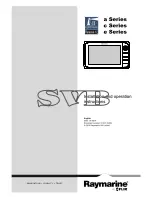
GTS1063 and GTS1250 GBIC Test Systems Instruction Manual
87
Appendix B: GTS1063 CRPAT and CJTPAT Patterns
This appendix displays the CRPAT and CJTPAT patterns.
Fibre Channel MJS Jitter Test Patterns
The Fibre Channel working group submitted a Working Draft for Methodologies
for Jitter Specification (MJS) in 1998. This draft was a technical report to the
Accredited Standards Committee of National Committee for Information
Technology Standardization (NCITS) and has a revision number known as
T11.2/Project 1230/Rev 7, December 16, 1998.
The MJS document defined several jitter test patterns. The RPAT (Random
Pattern) was developed to provide a broad and flat spectral content of frequency;
a modified version of this was also defined in which the format of the pattern
was properly encapsulated within a “compliant” frame structure, and is named
CRPAT (Compliant Random Pattern). The CJTPAT (Compliant Jitter Tolerance
Pattern) was developed to provide a data stream which would induce large
instantaneous phase jumps; a modified version of this was also defined in which
the format of the pattern was properly encapsulated within a ”compliant” frame
structure, and is named CJTPAT (Compliant Jitter Test Pattern).
Tables 25 and 26 describe the sequential bit sequence of the CRPAT and CJTPAT
patterns. The tables are arranged such that the time domain occurrence of the bits
is from left to right, and top to bottom. The tables are divided into groups of
three rows which contain the information shown in Figure 40.
Code group name (octet value) row
10B code group sequence row
BERT hex row
Figure 40: Long Pattern and Short Pattern table format
This row lists the code groups transmitted in time domain order (from left to
right, top to bottom). The Octet value (8-bit HEX prior to 8B10B encoding) of
the code group is listed in parenthesis.
Table Formats
Code Group Name
(Octet Value)
Artisan Technology Group - Quality Instrumentation ... Guaranteed | (888) 88-SOURCE | www.artisantg.com
















































